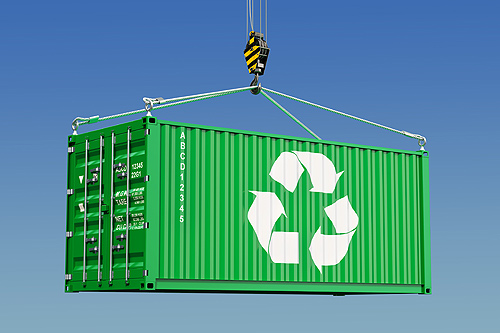Overcoming the Challenges of Construction Recycling
We’ve explored some of the business benefits to recycling construction materials, but it’s hard to ignore the challenges of recycling unused materials. Read on to learn about some of the top challenges to keep in mind when assessing the financial feasibility of construction recycling.
There Aren’t Always a Lot of Options
When builders recycle construction materials, they can gain a competitive edge by making their companies more environmentally friendly. In some instances, however, builders don’t have a lot of construction and demolition (C&D) recycling options. If there isn’t a C&D recycling facility nearby, builders usually have to pay quite a bit to haul their materials long distances. Even if they do have C&D recycling options in their markets, the facilities may not provide on-site sorting, meaning the builders have to sort materials themselves.
In some instances, a C&D recycling facility may not follow through on its promise to recycle materials. This means a builder can’t always be sure materials will be recycled after they leave the site. This is why it’s a good idea to make sure the facility is certified with the Recycling Certification Institute, which audits the records of C&D recycling facilities to make sure they are actually doing what they claim.
It’s Not Always Cost-Effective
Even when builders have access to C&D facilities in their markets, the costs don’t always justify recycling efforts. The average cost of some C&D recycling facilities can be nearly twice those of a C&D landfill. Since they base their costs on volume, landfills are typically willing to charge less for dumpsters. This is especially true when construction sites are located near C&D landfills.
For smaller builders, in particular, it often makes more economic sense to simply dispose of unused materials so they can quickly move on to another job site. When they are forced to separate and recycle materials, these builders lose some agility, which can make them less productive and less competitive in certain situations.
What’s the Solution?
Even if they can’t see the economic value in using C&D recycling facilities, many builders have no choice. States such as California, Florida, Colorado and Massachusetts have regulations written into their building codes requiring that builders recycle a specified percentage of materials from job sites. To reduce the cost of recycling, many builders have found that they can negotiate lower costs from C&D recycling facilities if they agree to use them regularly and go through the trouble of sorting the materials themselves.
For smaller builders, it’s a lot easier and more cost-effective to be diligent in keeping waste to a minimum in the first place. This means making sure workers and subcontractors completely empty their caulking tubes. It also means using pre-cut lumber and framing packages to minimize waste.
All of these steps can go a long way toward helping builders reduce material costs and waste, while ensuring that their residential construction businesses are compliant with state recycling regulations. It can also help builders resonate with eco-conscious customers and set their businesses apart from the competition.
Learn how you can protect your business and add valuable selling points to your new builds with 2-10 Structural Warranties.








